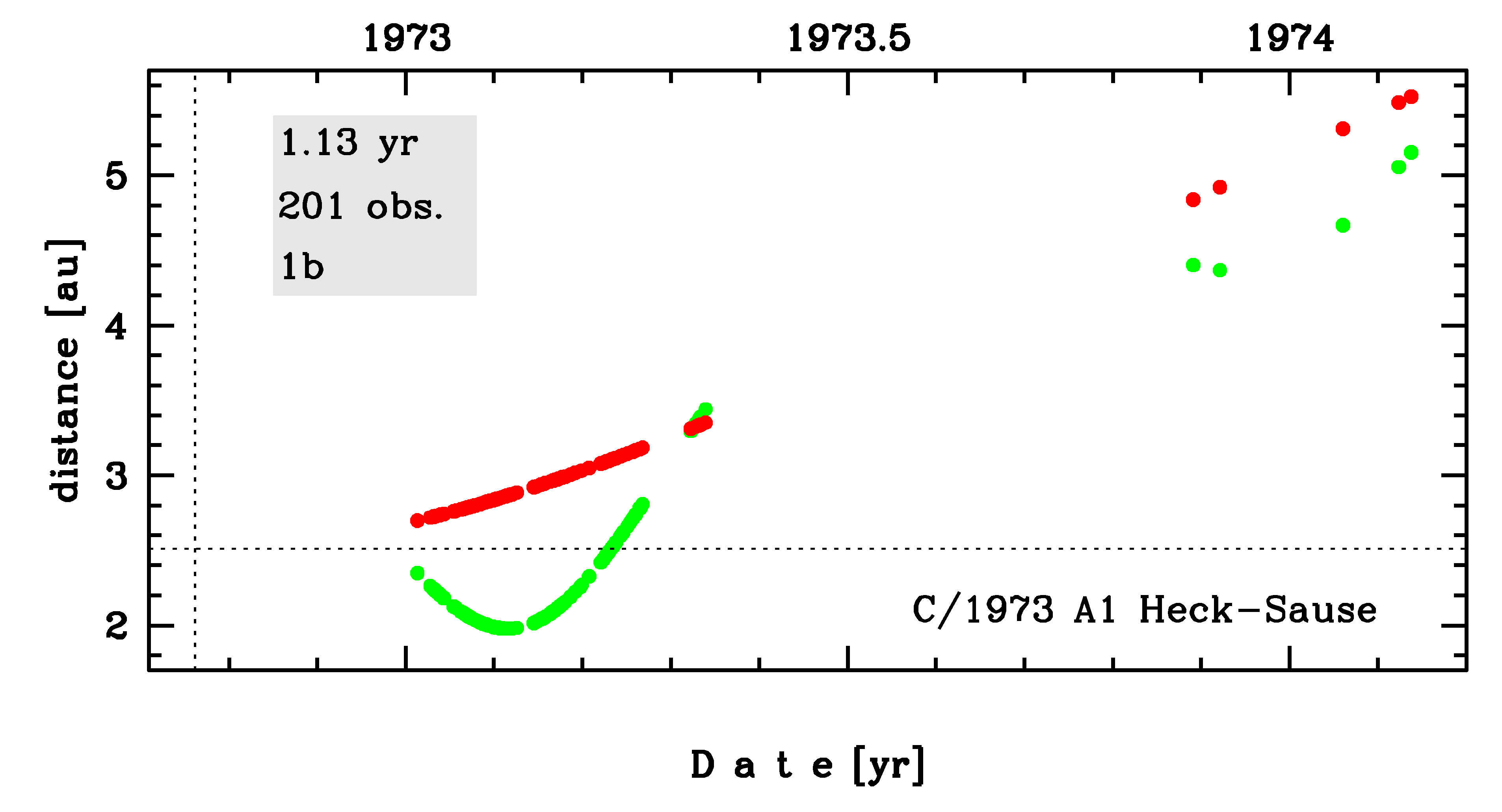C/1973 A1 Heck-Sause
more info
Comet C/1973 A1 was discovered on 11 January 1973 by André Heck and Gérard Sause (Haute Provence Observatory, France), that is more than 3 months after its perihelion passage.In the next few months prediscovery images were found taken on 4 January (Sendai Municipal Observatory, Japan) and 10 January (Montpellier, France). This comet was observed until 26 February 1974 [Kronk, Cometography: Volume 5].
Comet had its closest approach to the Earth on 11 February 1973 (1.978 au), a month after its discovery.
Solution given here is based on post-perihelion data spanning over 1.13 yr in a range of heliocentric distances from 2.70 au to 5.53 au.
This Oort spike comet suffers rather small planetary perturbations during its passage through the planetary system; these perturbations lead to a more tight future orbit.
See also Królikowska 2020.
Comet had its closest approach to the Earth on 11 February 1973 (1.978 au), a month after its discovery.
Solution given here is based on post-perihelion data spanning over 1.13 yr in a range of heliocentric distances from 2.70 au to 5.53 au.
This Oort spike comet suffers rather small planetary perturbations during its passage through the planetary system; these perturbations lead to a more tight future orbit.
See also Królikowska 2020.
| solution description | ||
|---|---|---|
| number of observations | 201 | |
| data interval | 1973 01 04 – 1974 02 19 | |
| data type | observed only after perihelion (POST) | |
| data arc selection | entire data set (STD) | |
| range of heliocentric distances | 2.7 au – 5.53au | |
| detectability of NG effects in the comet's motion | NG effects not determinable | |
| type of model of motion | GR - gravitational orbit | |
| data weighting | YES | |
| number of residuals | 400 | |
| RMS [arcseconds] | 1.24 | |
| orbit quality class | 1b | |
| orbital elements (heliocentric ecliptic J2000) | ||
|---|---|---|
| Epoch | 1972 10 10 | |
| perihelion date | 1972 10 05.45988519 | ± 0.00244124 |
| perihelion distance [au] | 2.51109947 | ± 0.00001461 |
| eccentricity | 1.00046034 | ± 0.00003078 |
| argument of perihelion [°] | 346.233721 | ± 0.000833 |
| ascending node [°] | 175.877044 | ± 0.000146 |
| inclination [°] | 138.62815 | ± 0.000139 |
| reciprocal semi-major axis [10-6 au-1] | -183.32 | ± 12.26 |
